4 July 2016
The visitor is greeted in the first room by a pinball machine: it has a Playboy theme. Nothing unusual about that, except for the fact that from the side where the player holds onto the machine in order to join battle with the steel ball sprout two female legs, with a vagina in the middle and high heels on their ends. The sculpture is set on a bronze bed and the title of the work is The Bronze Pinball Machine with Woman Affixed Also (1980). What comes next is a journey through domestic settings profaned by monstrous figures: all hinting at the iniquities of the human species, between consumerism, sexual perversion and abuse of religious iconography. An old-fashioned carousel seems to offer some relief, until you realize that its eight faces represent the population of the world: five are devoted to poverty, two to the middle class, one to wealth. The works are by Edward Kienholz, active in America from the late fifties until the mid-nineties (he died on June 10, 1994), and many were produced in collaboration with his wife Nancy. The Fondazione Prada has devoted a breathtaking exhibition to them, culminating in Five Car Stud (1969-72), the image of a country torn between proclamations of equality and deep-rooted racialism. “Kienholz,” writes Germano Celant, “made no attempt to sublimate the meanness and tragedy of life, its conditions of loneliness and triviality, but used them as a way of putting a shine on a low and popular universe, in which the wasted and the dirty, the depraved and the filthy represented a new and surprising beauty.” While American artists moved between Abstract Expressionism and the new dominant aesthetics of pure form, that of Minimalism and Pop Art, he chose to go down the road of dissent and the politically incorrect. His works are tableaux vivants that give material expression to what society has repressed, bringing it out and holding it up to view, for the beauty that art presents to us is no more than a reassuring placebo. Who can argue with him?
Kienholz: Five Car Stud
Curated by Germano Celant
Fondazione Prada, Milan
May 19-December 31
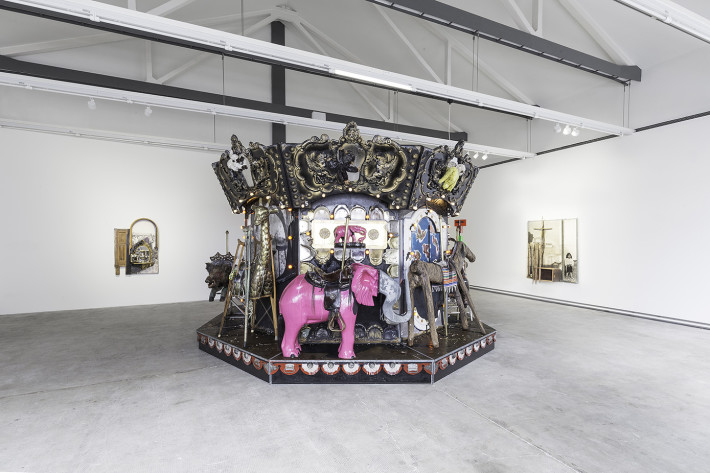
Center: Edward & Nancy Reddin Kienholz, The Merry-Go-World or Begat By Chance and the Wonder Horse Trigger, 1991-94. Left: Edward & Nancy Reddin Kienholz, Drawing from Elle, 1991. Right: Edward & Nancy Reddin Kienholz, Drawing from Angel, 1990.
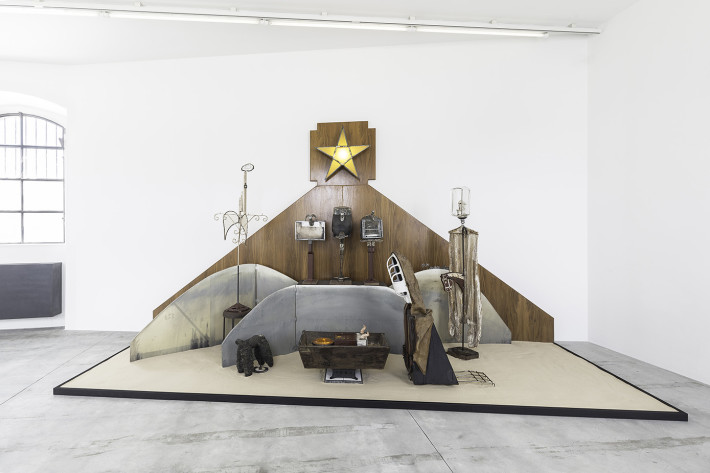
Edward Kienholz, The Nativity, 1961.
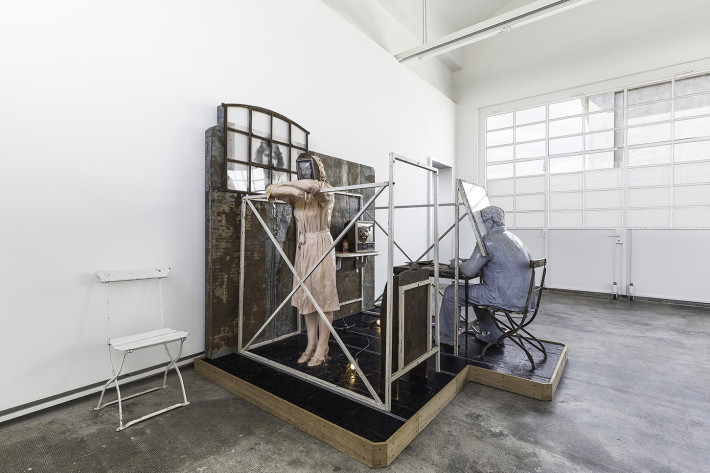
Edward & Nancy Reddin Kienholz, Bout Round Eleven, 1982.
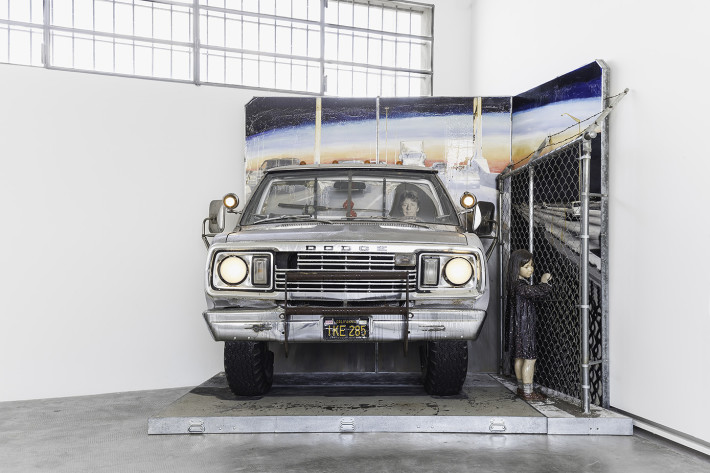
Edward & Nancy Reddin Kienholz, Jody, Jody, Jody, 1993–94.
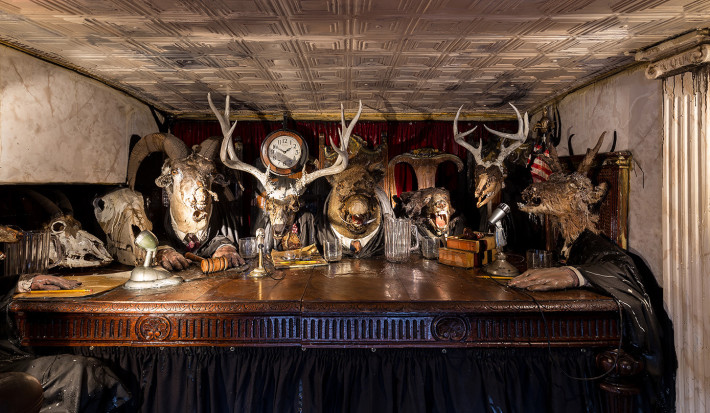
Edward & Nancy Reddin Kienholz, The Caddy Court, 1986–87.
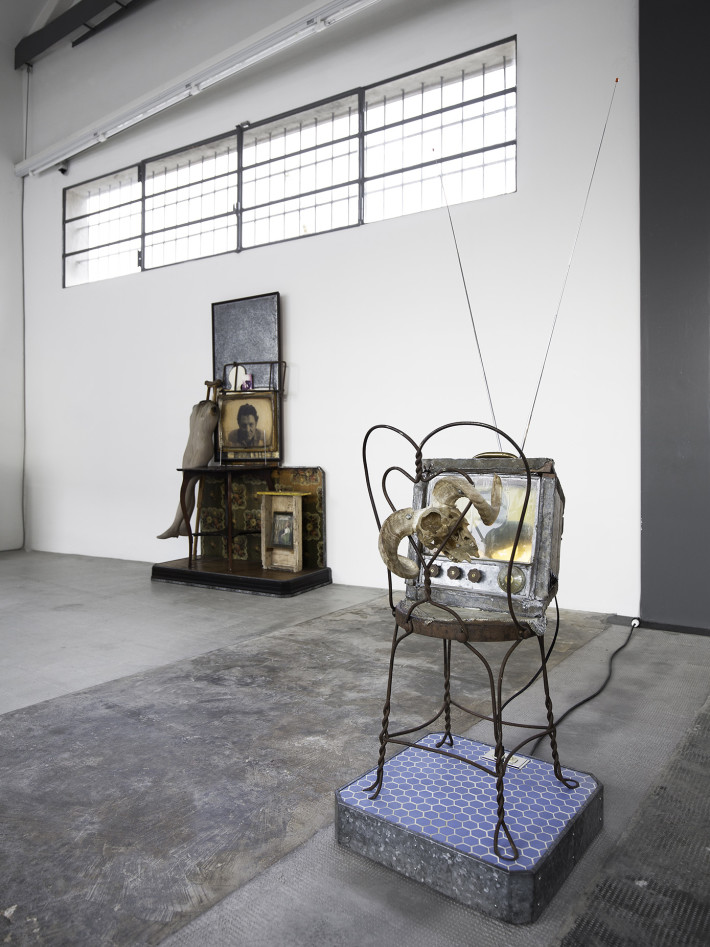
From left to right: Edward & Nancy Reddin Kienholz, The Twilight Home, 1983; Edward & Nancy Reddin Kienholz, The Death Watch, 1976.
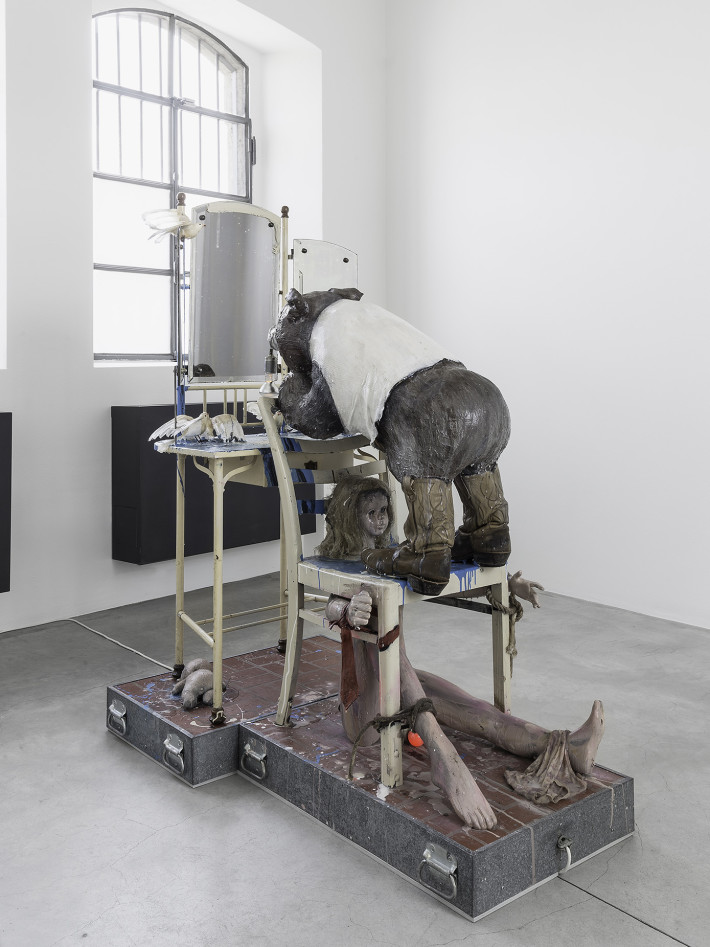
Edward & Nancy Reddin Kienholz, The Bear Chair, 1991.

Edward Kienholz, ‘Ore The Ramparts We Watched, Fascinated, 1959.
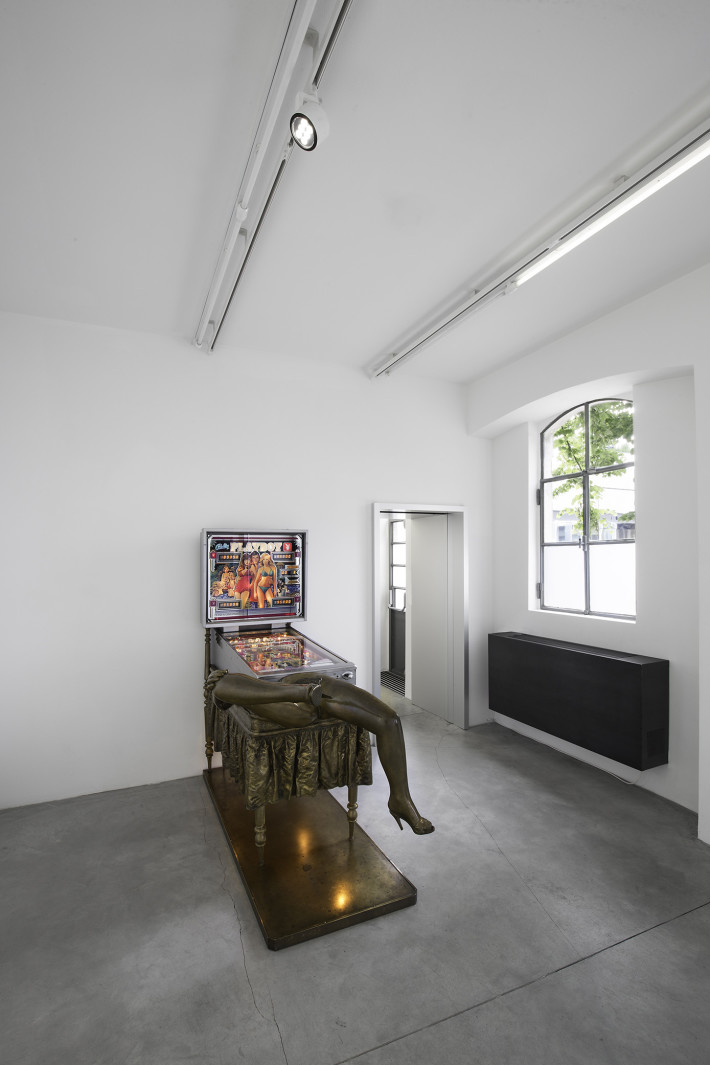
Edward & Nancy Reddin Kienholz, The Bronze Pinball Machine with Woman Affixed Also, 1980.
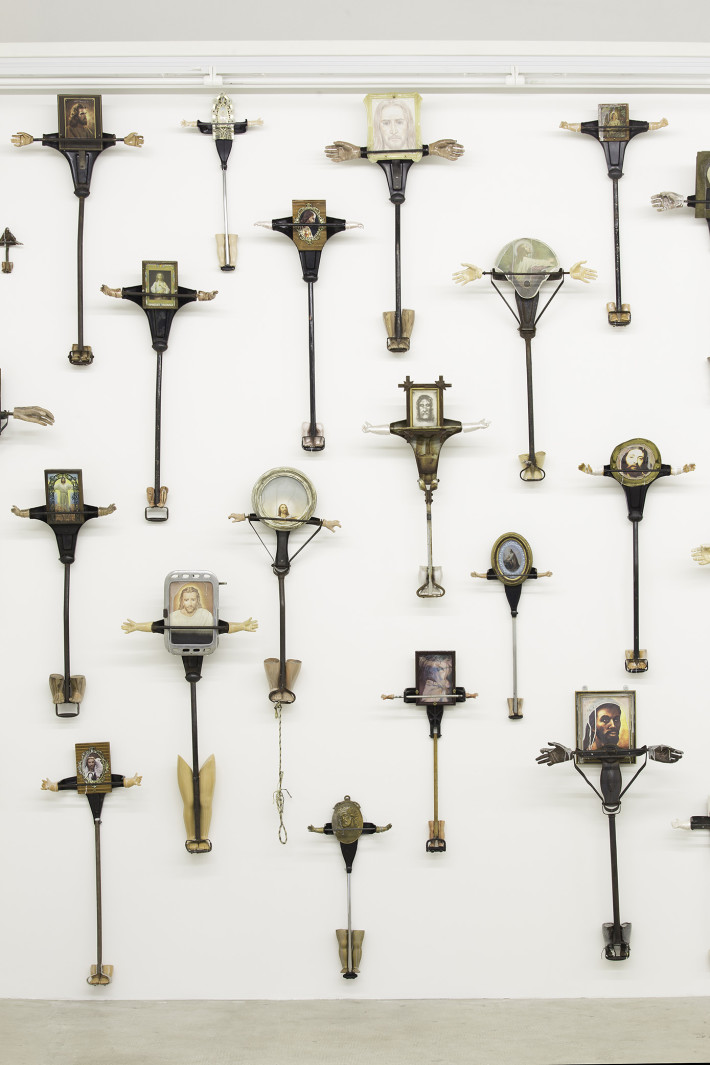
Edward & Nancy Reddin Kienholz, 76 J.C.s Led the Big Charade, 1993–94.